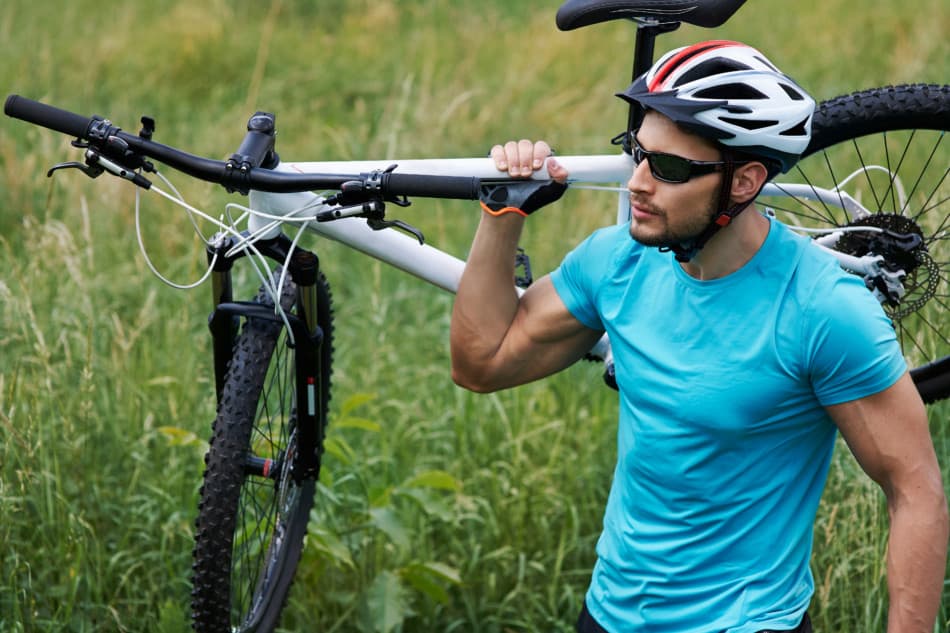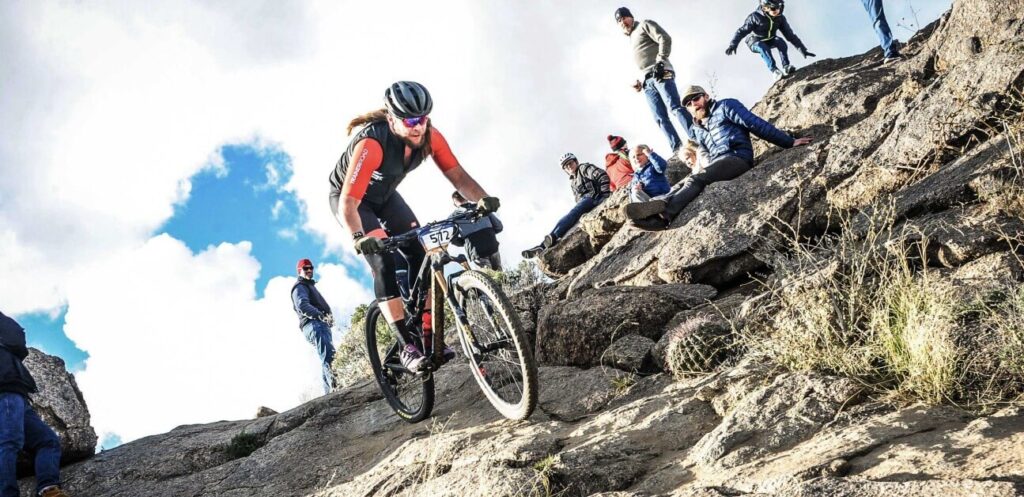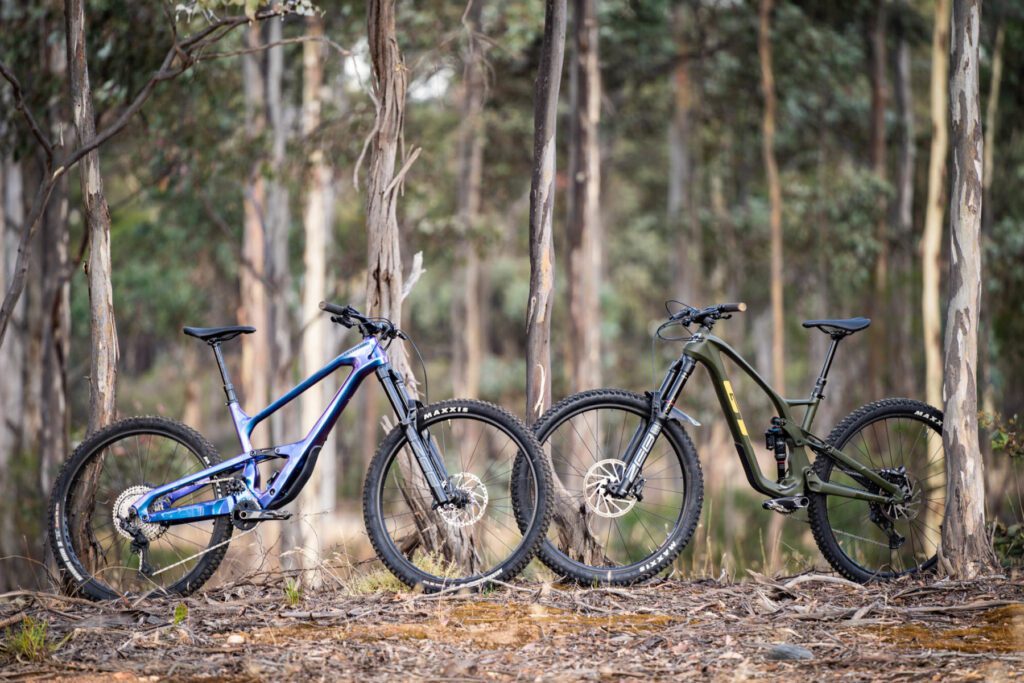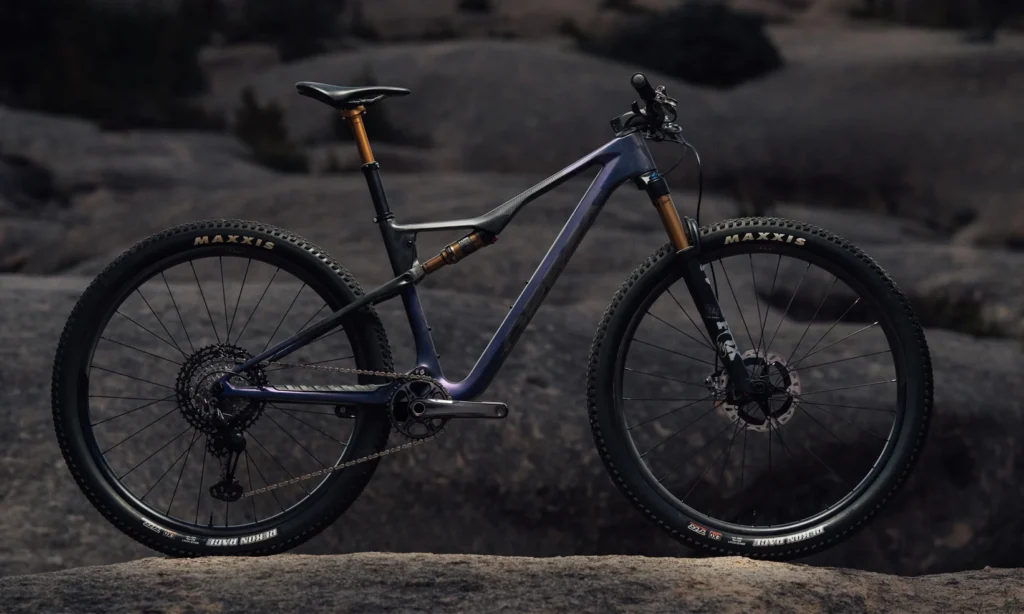


Exploring the Trail Mystery: Why Don’t Mountain Bikes Have Kickstands?
Have you ever wondered, “Why don’t mountain bikes have kickstands?” A question that many curious riders ponder as they gear up for off-road adventures.
Let’s delve into the fascinating world of mountain biking culture and unravel the enigma of the trails together.
Trail-Ready Design



The trail-ready design of mountain bikes is all about achieving optimal performance and maneuverability in rugged terrains. Mountain bikes don’t have kickstands on purpose to follow minimalist and purpose-driven design principles.
Weight Optimization:
Mountain biking often involves navigating challenging trails, where every extra gram can make a significant difference. Kickstands, while seemingly small, contribute to unnecessary weight.
Streamlined Aesthetics:
The aesthetic aspect of mountain bikes plays a crucial role in their design. The bike’s cleaner and sleeker appearance, which lacks a kickstand, indicates its suitability for off-road performance.
Trail-Focused Functionality:
Manufacturers design mountain bikes to perform well on trails. Manufacturers specifically design mountain bikes for optimal performance on trails. They prioritize features such as suspension systems and lightweight materials.
These bikes do not prioritize accessories like kickstands, as they may not function effectively in challenging conditions.
Enhanced Maneuverability:
On the trail, riders often encounter obstacles, steep inclines, and technical descents.
A bicycle without a kickstand is simpler to handle. It allows riders to go through tight spaces, overcome obstacles, and stay in control on different terrains. This is possible because there are no protruding accessories.
Cultural and Competitive Influence:
In competitive mountain biking, every second counts. Removing unnecessary features like kickstands helps riders prioritize speed, efficiency, and a direct connection with the trail.
Read More : ( Can you turn a road bike into gravel bike )
Weight Considerations



Weight plays an important role in mountain biking as it influences the design and performance of bikes.
Agility and Maneuverability:
On mountain trails, riders often encounter a variety of obstacles, steep inclines, and technical descents. A lighter bike responds more promptly to rider input, enhancing agility and maneuverability.
Energy Efficiency:
Riding a lighter bike demands less energy from the rider. With reduced weight, cyclists can accelerate, climb, and maintain speed more efficiently.
Using a lighter bike during long rides or competitions is important. It helps the rider feel less tired and perform well for a longer time.
Climbing Performance:
Uphill climbs are a substantial part of mountain biking, and a lighter bike offers a distinct advantage. Gravity plays a significant role in uphill sections, and a reduced overall weight minimizes the effort required to ascend.
Handling and Control:
A lighter bike contributes to better handling and control, particularly when navigating technical sections or making quick directional changes. The reduced weight allows riders to maintain stability and balance, essential elements for conquering challenging terrains and obstacles.
Overall Trail Experience:
The cumulative effect of saving grams throughout the bike’s design results in an overall enhanced trail experience. A lighter bike makes off-road rides more fun, with easier uphill climbs and better downhill descents for adventurous bikers.
You May Also Like : ( What are the lightest mountain bikes )
Terrain Challenges



Here’s a simpler breakdown:
Uneven Ground:
Mountain biking often involves riding on trails with rocks, roots, and uneven surfaces. These natural obstacles require bikers to constantly adjust and maneuver their bikes to avoid getting stuck or losing control.
Steep Inclines and Declines:
Trails can include steep uphill climbs and downhill descents. Navigating these slopes demands precise control and balance. Bikers must pedal well on steep slopes and brake carefully on downhill sections to avoid going too fast.
Narrow Paths:
Mountain trails may become narrow, with limited space to maneuver. Negotiating tight spaces requires skillful handling of the bike to avoid collisions with trees, rocks, or other obstacles.
Loose Gravel and Dirt:
Loose gravel or dirt can cover trails, making the surface slippery and challenging to grip. Bikers need to adjust their technique to maintain stability on these unpredictable surfaces.
Water Crossings and Mud:
Mountain trails may feature water crossings and muddy patches. Bikers must cross water without losing balance. Pedaling and maneuvering the bike becomes more difficult in mud.
Obstacles like Logs and Rocks:
Trails often present bikers with obstacles like logs and rocks. Successfully navigating these features requires skilled bike handling, including hopping over or maneuvering around such challenges.
Performance Impact



Let’s break it down:
Weight Distribution:
How the distribution of weight on a bike affects its handling. Uneven weight distribution makes the bike unstable, but balanced distribution improves stability, making it easier to steer.
Responsive Handling:
How quickly and accurately a bike responds to the rider’s movements closely ties to performance. A balanced bike helps you steer accurately, making it easier to navigate confidently through twists, turns, and obstacles.
Suspension System:
The bike’s suspension system plays a vital role in maintaining traction and absorbing shocks from uneven terrain. An effective suspension system contributes to a smoother ride, enhancing the overall performance and comfort on challenging trails.
Maneuverability:
A bike’s ability to navigate through tight spaces, handle corners, and perform tricks depends on its maneuverability. Balancing parts makes the bike respond better to the rider, leading to a more fun and exciting ride.
Overall Control:
Achieving a perfect balance on two wheels means riders have better control over their bike. This is important for staying balanced on bumpy ground and gives riders confidence to handle different types of terrain.
Trail Etiquette and Environmental Harmony



Here’s a breakdown:
Respecting Nature:
This involves staying on designated trails, avoiding disruption to wildlife, and refraining from littering. By respecting the natural environment, mountain bikers help preserve ecosystems and keep the trails enjoyable for everyone.
Sharing Trails Responsibly:
Mountain bikers prioritize trail users like walkers and joggers to create a friendly and cooperative environment.
Minimizing Noise Disturbance:
Riding quietly keeps nature peaceful, especially where there are animals.
Trail Maintenance and Volunteerism:
Responsible bikers engage in trail upkeep, clearing debris, and participating in clean-up events. This proactive involvement ensures sustainable and well-maintained trails.
Educating Fellow Riders:
Mountain bikers promote responsible behavior, trail rules, and Leave No Trace principles to create a sense of community responsibility.
Adhering to Trail Regulations:
Following trail rules keeps everyone safe and makes the trail experience organized.
Leave No Trace Principles:
Bikers follow principles like packing out all trash and minimizing impact on vegetation, leaving natural areas undisturbed.
Alternative Solutions: Parking your Mountain Bike



Here’s a detailed explanation:
Gravity Stand:
Some bikers use a simple and ingenious technique known as a gravity stand. Lean the bike against a strong object, like a tree or post, so it stands up on its own without help.
While it requires finding a suitable object, it’s an easy and effective solution for a quick pit stop.
Wall Hooks and Racks:
Wall-mounted hooks or racks provide an organized and space-saving option for storing bikes.
Cyclists can install these hooks in a garage, shed, or any suitable space. Hanging the bike up high prevents damage and keeps it organized.
Bike Trees or Posts:
In cities or bike parks, special bike trees or posts with slots for wheels provide a convenient parking option. Riders can secure their bikes by placing the wheels in these slots, preventing the need for a kickstand.
Foldable Stands:
Some cyclists choose compact, foldable stands that they can easily carry with the bike. These stands keep the bike stable on different surfaces and are lightweight because they can be folded.
Bike Nests or Hubs:
In communal or public spaces, bike nests or hubs equipped with secure slots allow riders to park their bikes safely. These dedicated areas promote organized parking and prevent bikes from cluttering public spaces.
Hydraulic Seat Posts:
Some mountain bikes have hydraulic seat posts that lower to the desired height. Lowering the seat can provide temporary support for the bike. This allows the bike to lean on the seat and handlebars without moving.
Flat Surfaces and Lean Techniques:
Bikers can lean their bikes on flat surfaces or natural objects like rocks or logs instead of using a kickstand. Position the bike’s frame against the object to provide stability.
The Future of Mountain Biking:



Smart Technology Integration:
Incorporating sensors and connectivity for real-time data, smart suspensions adjust to terrain, enhancing rider control and comfort.
Advanced Materials:
Cutting-edge materials like composites and sustainable alternatives produce lighter, more durable frames, improving performance and reducing environmental impact.
Sustainable Design:
Embracing eco-friendly practices ensures trails’ longevity, promoting responsible biking that minimizes environmental footprint and preserves natural landscapes.
Trail Experiences Redefined:
Virtual and augmented realities offer immersive trail navigation, training simulations, and interactive elements, transforming the way riders engage with and experience mountain biking.
Safety Innovations:
From advanced helmet designs to intelligent protection systems, innovations prioritize rider safety, allowing bikers to push their limits with confidence and reduce the risk of injuries.
E-Mountain Bikes:
Electric-assist bikes revolutionize uphill challenges, making climbs more accessible and extending the range of trail adventures, blending traditional biking with modern technology for a dynamic riding experience.
Community and Events:
Technology fosters global connectivity among mountain biking communities, enabling virtual events and shared experiences, creating a sense of camaraderie among riders worldwide.
Adaptive Biking:
Innovations in adaptive biking make mountain trails more inclusive for individuals with diverse abilities, ensuring everyone can enjoy the thrill of off-road riding regardless of physical challenges.
Conclusion
In the exhilarating world of mountain biking, the absence of kickstands isn’t just a design choice; it’s a deliberate embrace of a dynamic and weight-conscious culture. Why don’t mountain bikes have kickstands?
Every gram matters in this kickstand-free ethos, contributing to the bike’s agility and responsiveness on unpredictable trails. Alternative solutions like gravity stands and foldable racks have emerged, providing secure parking without compromising the thrill of the ride.
So, why don’t mountain bikes have kickstands? Because we find the journey to be the destination, and we experience the thrill in every kickstand-free revolution of the wheels.
FAQ’s
Q: Why don’t mountain bikes have kickstands?
ANS: Mountain bikes prioritize weight, agility, and trail performance. Kickstands add unnecessary weight and hinder maneuverability. Bikers opt for alternative solutions like leaning or specialized racks for practical parking.
Q: Do you put a kickstand on a mountain bike?
ANS: Generally, mountain bikers don’t use kickstands. They prioritize weight reduction and maneuverability. Alternative solutions, like leaning the bike or using specialized racks, are preferred for practical parking.
Q: Why don’t they put kickstands on bikes anymore?
ANS: Modern bikes, including mountain bikes, often skip kickstands for weight reduction, streamlined aesthetics, and improved maneuverability. Cyclists prefer alternative solutions like leaning against objects or using racks for practical parking.
Q: Can you put a stand on a mountain bike?
ANS: Yes, you can add a stand to a mountain bike. However, many mountain bikers choose not to use kickstands due to weight considerations and potential interference with trail performance.
Q: Why are downhill bikes so expensive?
ANS: Downhill bikes are expensive due to specialized components, advanced suspension systems, durable frames, and engineering for extreme conditions. Precision manufacturing, high-quality materials, and extensive testing contribute to their elevated cost.



Welcome to Bikegenics, where passion meets performance! We are a leading online destination for all things related to mountain biking, dedicated to providing you with top-notch gear, expert advice, and an immersive community to fuel your two-wheeled adventures. With a commitment to excellence and a deep love for the sport, we strive to elevate your biking experience to new heights.
